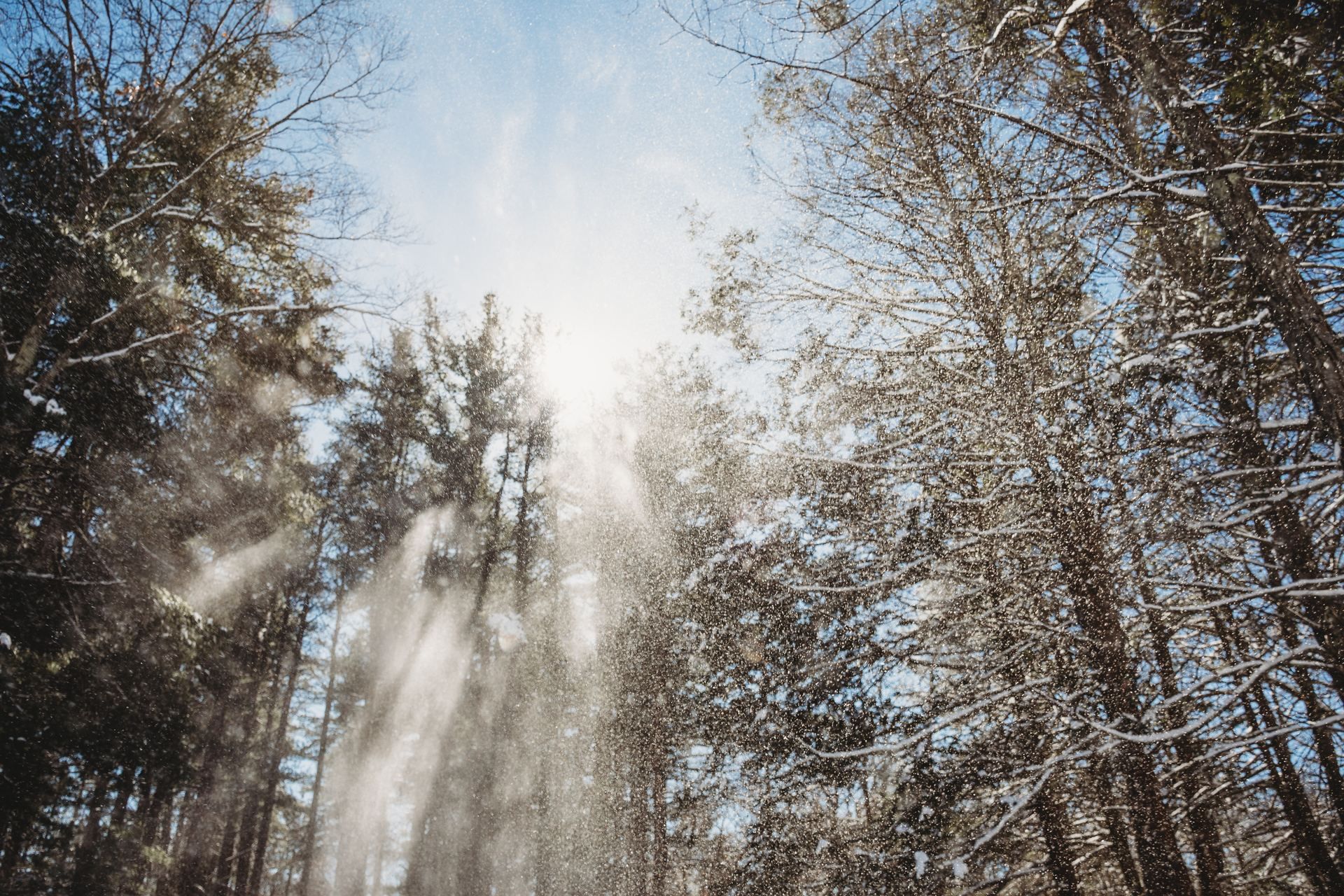Our Icy Past
January 18, 2024
Thousands of years ago, an ice sheet up to a mile thick moved across Massachusetts, creating well-known features like Cape Cod, Walden Pond, Plymouth Rock, and even the drumlin that gives Drumlin Farm its name.
Find out where to look and how to read the landscape for signs of glacial activity on your next outdoor adventure.
The Time of the Glaciers
Glaciers—huge bodies of ice that move across the landscape—have blanketed our state many times in the past. Although their causes are complex, one major factor is a regular shifting of the Earth’s orbit that changes how much sunlight or energy from the sun we receive. Note that this natural factor isn’t the cause of today’s fast-moving climate change.
Continent-wide glaciers are called ice sheets. The most recent one covered Massachusetts between about 22,000 and 14,000 years ago, scraping away the land right down to the bedrock. When it melted away, plants and animals returned from the warmer ice-free south. Some slow-moving life still hasn’t reappeared. For example, the glaciers destroyed native earthworms—all our earthworms are imports from Europe.
Glacial Clues To Look For
Massive sheets of ice in motion leave behind plenty of evidence. Here are six of the many signs you can see:
Glacial Till
New England’s famous stonewalls are made of rocks that farmers removed from fields so they could plow. They’re part of a layer of unsorted rubble called till that was left behind as the glacier scoured soil and bedrock. Find stonewalls at many of our wildlife sanctuaries.
Erratics
Glaciers also carry big boulders and drop them “erratically” in improbable places on the landscape. Plymouth Rock is one such erratic. You’ll also spot them at Rocky Hill in Groton and Moose Hill in Sharon.
Drumlins
These hills are formed when a glacier pushes up debris into an egg-shaped mound. Some examples include Bunker Hill, the Boston Harbor islands, and the drumlin that gives Drumlin Farm in Lincoln its name.
Kettle Ponds
When giant blocks of ice fall off glaciers and become partly buried, they form kettle ponds. The famous Walden Pond in Concord is one.
Eskers
As glaciers recede, rivers of meltwater course through them, leaving behind snaking trails of gravel and other streambed material called eskers. Walk along eskers at Ipswich River in Topsfield and Stony Brook in Norfolk.
Moraines
Glaciers also create huge piles of debris called moraines. Nantucket and Martha’s Vineyard mark places where the glacier stopped its southward crawl, leaving sediment it had been pushing along. In fact, much of Cape Cod is a huge moraine created by a pause when the glacier was retreating. Explore moraines at Wellfleet Bay and other wildlife sanctuaries in the area.
Explore Signs of Glacial History
So, next time you're out exploring, look around and ask yourself what evidence of glaciers you can find. Are there erratically dropped boulders? Stone walls in the middle of the woods? Or evidence or large-scale upheaval? Once you stop to take a closer look and ask questions, a whole new world opens up!
Stay Connected
Don't miss a beat on all the ways you can get outdoors, celebrate nature, and get involved.



